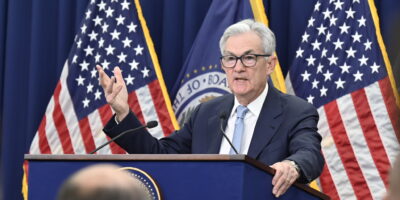The Curse of Cash
As I mentioned in an earlier post, I have been reading Ken Rogoff’s new book, The Curse of Cash. Rogoff is a very smart guy who has been thinking about this proposal for roughly two decades. It deserves serious consideration and I intend to give it such. I have organized my comments as follows. In this post, I will briefly summarize the main argument and some of the features of Rogoff’s proposal. In my next post I will review Rogoff’s estimate for the extent to which cash is used by criminals and tax cheats. Then, in two subsequent posts (here and here), I will discuss what I view as some shortcomings of the work.
Rogoff’s main argument is relatively straightforward. Cash is largely used to buy and sell illegal goods and services and/or evade taxes. It also places a lower bound on interest rates, thereby limiting the extent to which the monetary authority can prevent recessions. As such, we’d be better off without it.
To the extent that laws reflect societal preferences, the buying and selling of illegal goods and services reduces total welfare. We have made crack illegal for a reason: we think it is a net loss to society. Hence, when individuals use cash to circumvent the law and purchase crack, they make society worse off on net. Much the same could be said about taxes. Governments raise revenue to provide valuable goods and services. It designs the tax code such that the burden of taxation is born appropriately by all of its citizens. When some circumvent the tax code by employing cash to avoid sales tax or make it easier to underreport income, they increase the burden on others. Moreover, by effectively achieving favorable treatment under the tax code, tax cheats encourage resources to be diverted from other, more-productive-but-lower-post-tax-return uses. These inefficiencies are an unnecessary drag on economic growth.
Cash also results in what economists refer to as the zero lower bound. If interest rates are negative, individuals can withdraw cash to avoid paying interest on their deposits. To be sure, the lower bound is not precisely zero, as the term suggests, because it is costly to hold and secure large volumes of cash. But, at a significantly negative rate, such costs are worth bearing. As such, the monetary authority is left without ammunition when the appropriate interest rate target is sufficiently negative.
These two problems can be mitigated by reducing access to cash. So that is precisely what Rogoff proposes. He recommends starting with $100 and $50 bills. Since so few people use them in the formal, legal economy—and those who do could switch to lower denomination notes at little cost—he suggests we could eliminate them more or less immediately. Lower denomination notes ($20s, $10s, $5s) could be phased out in a decade or so, when poorer, and currently unbanked Americans have had time to transition to a less cash world. He suggests governments might encourage the transition by subsidizing deposit accounts or requiring direct deposit for welfare recipients. Likewise, if some degree of financial privacy is desirable, we might choose to keep low valued coins in circulation (think: less than $5). Coins, he reasons, are only a little more costly for making routine transactions but significantly more costly for holding and transporting large sums, as criminals are currently able to do with ease using large denomination notes. Best of all, Rogoff suggests that eliminating cash is basically a free lunch. On the one hand, the US government would lose seigniorage revenue (nearly $70 billion in 2015). It would also experience greater expenses in terms of subsidizing deposit accounts for the unbanked. On the other hand, it would increase tax revenue. Even if it were to eliminate a mere 20 percent of the net federal tax gap ($385 billion in 2006, the most recent year reported), it would more than cover the reduction from seigniorage. Moreover, to the extent that crime falls, the government could reduce expenditures on law enforcement, courts, and prisons.
In this post, I have attempt to present Rogoff’s views without comment. Summarizing Rogoff’s proposal in so few words is, perhaps, unfair. He considers many issues in the book that I have omitted here. For those of you interested in all of the subtleties, pick up a copy of the book (which I recommend). For the rest of you, check out the next post in this series here.









